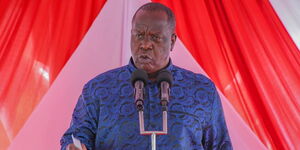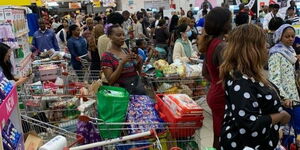The Kenyan Shilling is set to continue losing ground against the dollar, which surged to a two-week peak against its major peers on Thursday, May 30.
The rout in U.S. Treasury Bonds, spurred by rising yields and a flight to safe-haven assets, has boosted the dollar's allure.
The Shilling has depreciated to Ksh134, up from Ksh131.36 last Friday, May 23, and Ksh130.48 on May 16. Despite these shocks, the Shilling remains one of the best-performing currencies in 2024, with year-to-date gains against the dollar standing at 16.2 percent.
However, experts predict a potential rebound for the shilling, forecasting it could strengthen to an exchange rate of Ksh100. Analysts suggest this strengthening to the pre-2020 level of approximately Ksh101 might be realised by September.
The latest monetary update from the Economic Intelligence Unit (EIU) indicates that the U.S. dollar will remain strong against local currencies for an extended period, citing sustained high Federal Reserve rates.
“The Fed cuts will come later than we previously expected,” the report states. “We have pushed the forecast for the date that the Fed will begin reducing its policy rate to September, from June previously, and now expect a 50-basis-point reduction before year end (from 75 basis points previously).”
The exchange rate has significant implications for Kenya. It influences domestic inflation, as a weaker shilling makes imports more expensive. For instance, if a barrel of oil costs $100, at an exchange rate of Ksh120/USD, it would be Ksh12,000 per barrel. If the shilling depreciates to Ksh150/USD, the cost rises to Ksh15,000 per barrel, driving up prices for goods and services reliant on oil.
Conversely, a weaker shilling benefits exporters. Exports worth $1,000 would fetch Ksh150,000 at a Ksh150/USD rate, compared to Ksh120,000 at Ksh120/USD. However, different economic sectors are impacted variably by exchange rate fluctuations. Sectors not involved in exporting or importing goods, or those not competing with imported goods, are less affected.
On Thursday, the dollar climbed to a two-week high against the euro and extended its recovery from a more than two-month low against sterling, following a sharp increase in long-term Treasury yields. The surge, driven by stronger-than-expected economic data and poorly received auctions, has alarmed investors, triggering a sell-off in global equities and a rush towards safer assets.
The dollar index, which measures the currency against six major peers including the euro, sterling, and the Japanese yen, reached its highest level since May 14, hitting 105.17 on Thursday. This followed a 0.5% rise in the previous session.
"While countries globally have been debating USD dependence, it still remains a safe haven," noted TD Securities strategists in a briefing. They outlined "the basis for our medium-term stronger USD view."
As the shilling faces mounting pressure, the outlook remains uncertain. While its recent performance has been robust, the interplay between domestic economic conditions and global financial trends will be crucial in determining its future trajectory.
For now, both businesses and consumers must brace for the impacts of a weaker shilling, navigating the challenges and opportunities it presents.












